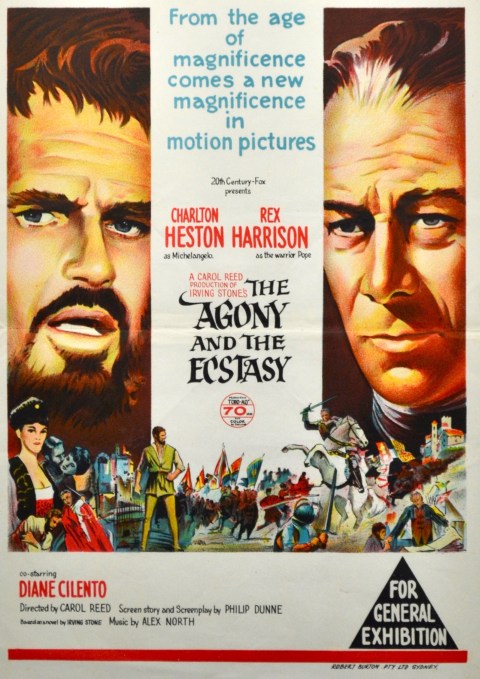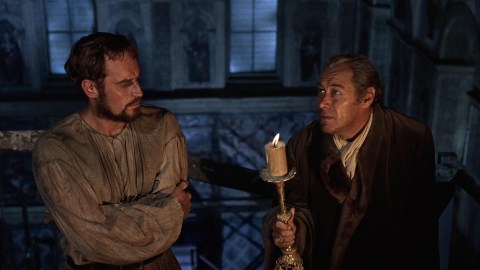17. 4. – 19. 4. 2026
The Agony and the Ecstasy

 Original title: The Agony and the Ecstasy
Original title: The Agony and the EcstasyDirector: Carol Reed
Production: 1965, USA / Italy
Length: 138 min. + intermission
Annotation for KRRR! 2012
The year is 1508 and the Italian Renaissance sculptor Michelangelo Buonarotti is working on the statues that are to become part of the tomb of the then Pope Julius II. However, the architect Bramante convinces the Pope to force Michelangelo to interrupt these works and assign him the task of decorating the ceiling of the Sistine Chapel. Although Michelangelo is not a painter, he accepts the job from the Pope, which leads to a series of dramatic conflicts and moments full of doubts about himself and the meaning of the assigned work…
The film In the Service of the Pope was originally supposed to be made in 1961 with Burt Lancaster in the lead role. However, it was not filmed until three years later under the direction of Carol Reed. Charlton Heston played Michelangelo and Rex Harrison played the Pope, although he was only the second choice. The British actor Laurence Olivier was originally considered for the role of Pope Julius II, but he had to turn down the offer due to his busy schedule.
The film is based on the literary work Agony and Ecstasy by American writer Irving Stone, which has sold more than 12 million copies worldwide (it was also published in our country in 2001). Although the book describes the almost 90-year-long life of Renaissance artist Michelangelo Buonarroti, the plot of the film draws only from passages describing work on the Sistine Chapel between 1508 and 1512.
The decoration of the chapel must have been very physically demanding for Michelangelo, as over the long years he endured four seasons with all their temperature fluctuations, during which he painted over three hundred different figures on an area of thirteen by six meters and a height of about twenty meters.
When writing the novel, Irving Stone drew on Michelangelo's letters and a biography written by Giorgio Vasari only a few years after Michelangelo's death. The plot of the film therefore probably corresponds to a large extent to how the events unfolded. Michelangelo really argued with the Pope when he would finish the work, as depicted in the film, and the moment when the Pope smashes his staff into Michelangelo's back is also true.
The filmmakers also tried to enhance the sense of authenticity by using real environments. They discussed with the Vatican the possibility of filming in the Sistine Chapel itself. These plans eventually fell through, but instead the film crew built a one-to-one replica of the chapel. The filmmakers even consulted art historians about the shades and brightness of the colors that were to be used in the film's frescoes.
The filmmakers also tried to be as faithful to the realities of the period as possible when it came to the actors. This was not a problem in the case of Charlton Heston. He had a metal rod inserted into his nose to make him look broken, he grew a beard, and he wore a cap typical of sculptors and stonemasons in the Renaissance period. In contrast, Rex Harrison was decidedly less accommodating: he refused to grow a beard, did not want to carry a scepter in his hand like a real Julius II, and even protested against the papal crown on his head.
The film premiered in Czechoslovakia on October 3, 1969, a full 5 years after its release abroad.